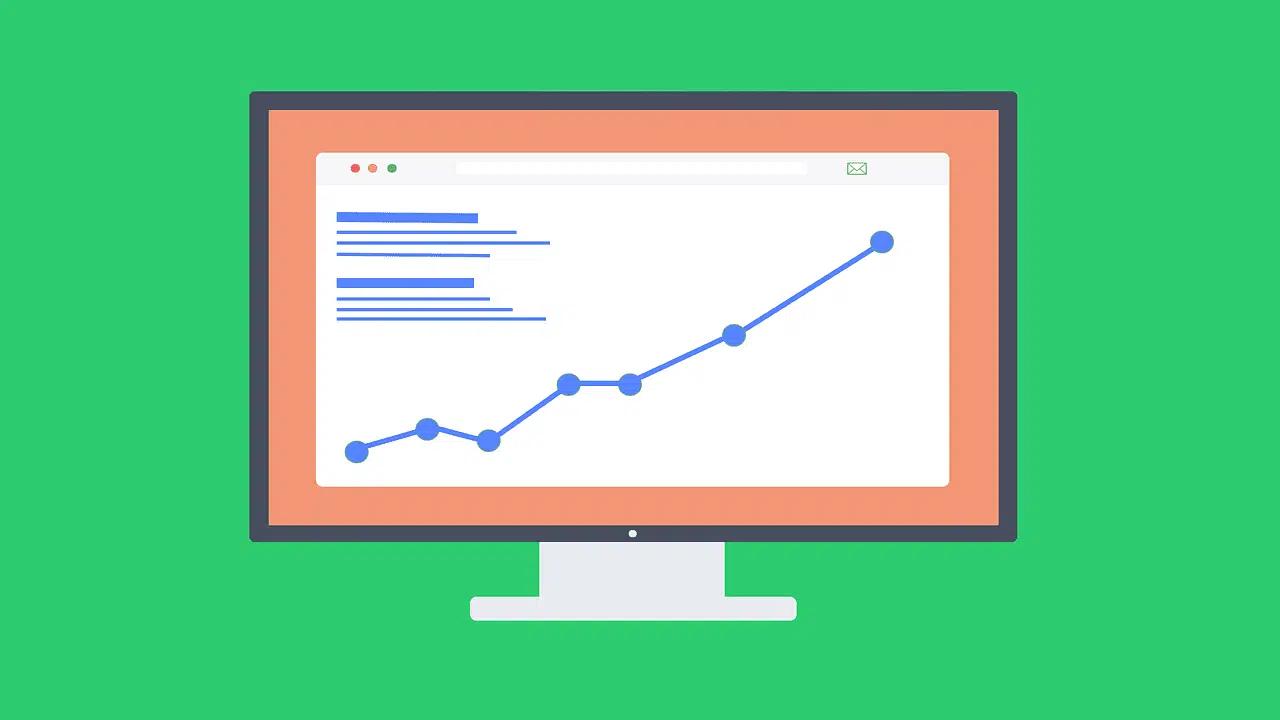When a shopper lands on your Shopify product page, a blurry image, vague description, or a messy variant selector sends them away. Among the Best Shopify Page Builders, product page customization is where you turn traffic into buyers by optimizing images, refining descriptions, arranging product features, adding reviews, and streamlining the add-to-cart flow. We provide clear steps, page templates, split tests, and quick optimizations to help you build product pages that convert. PagePilot's AI page builder helps with that by creating responsive product templates, optimized images, SEO tags, variant swatches, and persuasive microcopy so you can move from idea to a tested page in minutes.
The Importance of Customizing Your Product Page

Custom product pages change how shoppers decide and act. Global e-commerce revenue is projected to reach US$4.32 trillion by the end of 2025, with a compound annual growth rate (CAGR) of 8.02 percent from 2025 to 2029, and is expected to reach US$5.89 trillion by 2029.
There are roughly 3.6 billion online shoppers worldwide. On that scale, small lifts in conversion rate or average order value compound into significant revenue gains for stores that optimize their product detail pages.
Shoppers Want Personalized Products
Deloitte reports that 36 percent of shoppers prefer customized products, and many are willing to pay more for this level of personalization. That preference is directly linked to product page tactics, such as tailored product descriptions, dynamic content, variant selectors, and personalized recommendations, which create relevance and justify a price premium.
What Customization Changes on the Product Detail Page
Customization changes what shoppers see first, what proof they get, and how fast they can buy. Swap a generic description for benefit-led copy and structured product highlights. Replace a single image with an image gallery, product video, 360 view, and interactive swatches.
Surface ratings and verified customer reviews near the add to cart button. Add FAQs, shipping and returns information, trust badges, and schema markup for enhanced search results.
Boost Conversions with Smart Features
You can also add conversion features, such as sticky add-to-cart, quantity upsells, product bundles, cross-sell modules, and time-limited offers. Use metafields and custom templates to show size charts, ingredient lists, or downloadable guides only for products that need them. Those elements reduce confusion and increase perceived value while lowering return rates.
How Custom Pages Reduce Friction and Speed Decisions
Buyers abandon when they pause to answer basic questions. A clean layout that answers who, what, why, and how at a glance removes that pause. Fast page speed and mobile-responsive design keep load times low and reduce bounce rates.
Clear CTAs, visible price, and stock information cut cognitive load. Social proof and trust signals compress the trust-building process, allowing shoppers to move from interest to adding to cart more quickly.
Optimize Conversions with A/B Testing
Test variants with A/B testing, track clicks with heatmaps, and use session recordings to spot where users hesitate. Small changes, such as swapping button copy, relocating reviews, or adding a product video, can produce measurable increases in conversion.
Practical Elements to Customize on Shopify Product Pages
- Hero media: High-resolution images, zoom, 360 view, and short product videos.
- Copy and structure: Short benefit bullets above the fold, full description lower on the page, and readable, scannable sections.
- Variant options: Color swatches, size guides, and conditional logic to hide unavailable variants.
- Social proof: Star ratings, user photos, verified buyer badges, and review highlights.
- Upsell and cross-sell: Recommended products, bundles, and live inventory warnings.
- Trust and policy: Shipping estimates, returns policy, and secure checkout cues.
- Technical: Schema markup for product, price, and availability, fast hosting, and responsive layout.
- Personalization: Dynamic recommendations, recent viewer signals, and buyer intent-driven content.
Shopify Tools and Page Builders That Make Customization Practical
You can utilize the Shopify theme editor, which offers custom templates and Liquid code for in-depth control. For faster iteration, use page builders and landing page apps that support custom product templates, dynamic sections, and metafield mapping.
These tools enable marketers and designers to modify layouts and insert modules for reviews, videos, and FAQs without requiring a complete developer cycle. Integrate analytics, A/B testing tools, and tag managers to keep experiments measurable and trackable.
Measurement and Metrics That Prove Impact
Track conversion rate, add to cart rate, checkout completion rate, average order value, and revenue per visitor. Monitor page speed metrics and bounce rate to ensure UX changes do not slow the site.
Use cohort analysis to see whether personalization increases lifetime value and repeat purchase rate. Run controlled tests and calculate statistical significance before rolling changes site-wide.
Related Reading
- Does Shopify Host Websites
- Is It Worth Buying a Prebuilt Shopify Store
- How Much Does It Cost to Build a Shopify Website
- What is Custom Liquid Shopify
- Shopify Speed Optimization
- How to Customize Shopify Website
Key Elements to Customize on a Shopify Product Page

The product title must be clear, scannable, and SEO-friendly, allowing both shoppers and search engines to locate the page quickly. Use a structure that balances search keywords and buying intent, for example, Brand Model Key Feature. Test short names versus benefit-led variants to see which one lifts click-through and conversion rates on your product page template.
Product Description that Sells and Scans
Write a description that explains why the product matters and how to use it. Then, break the content into scannable sections and use bullet points to highlight key features, benefits, and specifications.
Add structured data and schema-friendly markup to ensure that meta descriptions and rich snippets display correctly in search results. Try an A/B test of long-form story plus short benefits versus concise technical specs to measure on-page time and add to your conversion rate optimization plan.
Product Images and Video that Close Deals
Use high-resolution photos, multiple angles, zoom, and a 360 view or short demo video to reduce uncertainty and increase purchase intent. Include lifestyle shots, white background shots for marketplaces, and variant-specific images or swatches so that each option has its own unique visual representation. Implement lazy loading and image compression to enhance page speed and mobile performance, while maintaining rich media for improved PDP engagement.
Price Presentation and Discount Strategy
Display the price prominently and explain any promotions or savings by displaying the original price next to the sale price and the percentage saved. Offer pricing tiers or bundle discounts, and display the per-item cost for bulk offers to help shoppers quickly compare value. Consider price anchoring and time-limited offers combined with precise shipping cost estimates to reduce cart abandonment.
CTA Button that Demands Action
Make the CTA stand out with contrast, a large tap target on mobile, and concise copy, such as 'Add to Cart' or 'Buy Now', with urgency when appropriate. Place a secondary action, such as "Buy Now" or "Save for Later," for shoppers who prefer a quick purchase or those who want to save for later. Track CTA clicks, heatmaps, and run A/B tests on copy, size, and position to find the best-performing product page layout.
Product Variants and Option Selectors that Reduce Confusion
Display size, color, and configuration options with clear labels, swatches, or interactive selectors so shoppers know exactly what they are buying. Sync images and prices with each variant and hide impossible combinations to prevent errors. Utilize variant-specific SKUs and inventory-linked selectors to prevent canceled orders and minimize returns.
Customer Reviews and Social Proof that Build Trust
Integrate review widgets, star ratings, and highlighted testimonials near the top of the product description to influence buying decisions. Utilize review snippets, customer images, and verified buyer badges to enhance credibility and SEO with schema markup. Prompt buyers for short reviews after delivery and test which review placements increase the add to cart rate.
Shipping Details and Calculator that Remove Doubt
Place shipping costs, estimated delivery dates, and return windows near the price or CTA so customers are not surprised at checkout. Offer a shipping estimator or zip code-based calculator to display exact timing and fees, and show free shipping thresholds to increase the average order value. If you offer fast or tracked shipping, show expected dates and carrier options to lower support contacts.
Trust Badges and Guarantee Signals that Reduce Risk
Add secure checkout icons, accepted payment logos, and money-back guarantees near the purchase area to reassure customers. Display warranty length, certified safety marks, and fraud protection to eliminate hesitations for higher-priced items. Test badge placement and wording to see which trust signals most improve cart conversion.
Inventory Levels and Scarcity Messaging that Drive Action
Display stock counts, low stock indicators, or preorder options to create a sense of urgency and prevent unexpected out-of-stock situations. Offer a 'notify me when available' feature tied to email capture for items that sell out, and use back-in-stock alerts to recover lost sales. Use caution with false scarcity; track how stock messaging affects conversion and customer satisfaction.
Upsell and Cross-Sell Sections that Increase Order Size
Place frequently bought together bundles, recommended accessories, and cross-sell carousels on the PDP to raise average order value. Utilize product bundle options, variant bundling, and one-click add-ons to simplify the purchase of complementary items for shoppers. Personalize recommendations using browsing data or AI-driven product suggestion engines to keep suggestions relevant.
Mobile Optimization and Page Speed that Keep Shoppers
Design the product page for mobile first with responsive image galleries, stacked content blocks, and large touch targets for variant selection and CTA. Prioritize page speed by compressing images, minimizing scripts, and using third-party widgets carefully to prevent conversion drops on small screens. Run regular mobile audits and A/B tests to validate changes under realistic network conditions.
AI-Powered Product Page Builder
Try PagePilot’s AI tools to speed product testing and page creation with our AI page builder; give our system a competitor or supplier URL, and we will generate a high-converting product page using the info found on that site, and our AI Product Image function will upgrade visuals so your store stands out.
Start a FREE trial and generate three product pages for free today, no credit card needed.
Ways to Customize a Shopify Product Page

The Shopify theme editor gives you visual control over the product page template and individual product templates. Use sections and blocks to add or remove elements, such as size charts, product videos, FAQ accordions, trust badges, and image galleries. Change fonts, colours, spacing, and button styles so your product description, call to action, and images match your brand.
Enable mobile preview and adjust layout and button size so mobile shoppers can quickly find the 'Add to Cart' button. Use dynamic sources to pull metafields into sections, allowing you to display custom product specifications or care instructions for each product.
Edit Theme Code for Complete Flexibility: Liquid, HTML, CSS, and More
When the theme editor no longer meets your needs, edit Liquid templates, HTML, and CSS. Create new product templates or snippets and wire in metafields for custom product options, such as engraving, personalization fields, or material choices. Add a custom form for enquiries or integrate a social proof widget directly into the PDP.
Build variant swatches, sticky add-to-cart bars, product tabs, and conditional blocks that display only for specific products or stock levels. Protect edits by duplicating the live theme or using version control, so you can roll back if a change breaks the storefront. Also, test performance and accessibility when adding scripts, so you do not slow down page speed or block indexing.
Apps and Product Page Builders: Drag-and-Drop and Specialty Plugins
Use apps when you need extra features fast. Page builders enable non-technical teams to construct high-converting product pages through drag-and-drop functionality, custom layouts, and reusable sections.
Product options apps add advanced selectors, file uploads, or conditional fields without code. Install review apps and trust badge widgets to show star ratings and verified buyer photos.
Upsells, Cross-Sells, and Smart Apps
Add upsell and cross-sell widgets, bundle builders, subscription options, or size chart pop-ups to increase average order value. Monitor page speed after installing apps and prefer those that utilize Shopify app extensions or theme app extensions to minimize script bloat. Run A/B tests or link heatmaps and analytics to your builder to measure what works.
Choose an Optimized Theme: Pick One Built for Product Pages
Your theme sets the starting point for product page design and speed. Premium themes often include product-specific modules, such as quick view, product tabs, multimedia galleries, zoom, and 3D model support, as well as built-in upsell areas. Look for responsive design, fast load times, and clean markup that supports SEO and structured data for product schema.
Confirm that the theme supports dynamic sources and metafields, allowing you to populate rich product content without code. Evaluate demo stores using real product pages, and test how the theme handles extensive catalogs, many variants, and bundled products.
Tactical Tweaks That Raise Conversion and Clarity on Any Product Page
Add clear product images with consistent crops and a mobile-friendly gallery. Use short, scannable product descriptions, listing features first and benefits next. Place a prominent call to action that contrasts with the page and repeats on long pages.
Show stock levels and shipping estimates to reduce customer friction. Include size guides and measurement tips in a pop-up or a linked modal to minimize returns. Utilize structured data for price availability and reviews to enable search engines to display rich results. Implement analytics, session replay, and conversion funnels to identify where customers drop off and iterate based on real data.
Technical Hooks and Advanced Integrations You Can Use
Expose metafields via the admin or API to store attributes such as material, care, or dimensions and display them via dynamic sections. Use Shopify scripts or a custom app for complex pricing logic, bundles, or subscription flows when built-in tools cannot handle the rules.
Integrate third-party review platforms with widgets that conserve performance. If you have a headless setup, use the Storefront API to render a custom front end while keeping Shopify as the backend. Audit JavaScript and third-party libraries regularly to avoid slowing the product page.
Quick Guidelines to Avoid Common Mistakes
Avoid heavy scripts above the fold that block rendering. Do not duplicate content across product pages without unique descriptions and attributes. Keep images optimized for the web and use modern formats when supported.
Validate that variant selectors function correctly across devices and display price and inventory changes instantly. Use accessibility-friendly HTML so users with assistive technology can buy with ease. Make incremental changes and test so you catch regressions early. Which pain point do you see on your current PDP that you want to fix first
9 Best Practices for Shopify Product Page Customization

1. Make Your Product Description Sell the Product, Not the Fluff
Write crisp, on‑brand copy that describes the product, its main benefit, and who it’s for. Lead with a clear value statement that addresses intent and use case, then layer features and specs. Use short paragraphs and bullet-style lines for key specifications (material, dimensions, weight, and compatibility).
Place a single, longer block lower on the page for a full description, care instructions, or a production story. Add structured data and optimized meta text so search and social previews show accurate product details.
2. Be Direct So Scanners Convert Fast
Eye tracking and usability research indicate that 79% of people scan pages rather than read them word for word, so the top of the product page requires a concise, scannable pitch. Put the product name, price, a one-line benefit, and the primary CTA above the fold.
Use headers, short lines, and bolded specs to guide the eye. Keep promotional copy concise at the top; reserve longer, more persuasive copy for the bottom of the page for buyers who want more detail.
3. Answer the Questions Buyers Will Ask
List the practical answers customers need before checkout, including sizing and fit, materials, dimensions, weight, assembly requirements, compatibility, battery life, warranty information, shipping windows, and returns policies. Add a size guide, downloadable spec sheet, or FAQ accordion for variant details.
Use variant swatches and dynamic pricing so shoppers see the correct info when they select a color or size. Precise product data reduces returns and raises conversion and average order value.
4. Use Images to Communicate Texture, Scale, and Quality
Visuals influence purchase decisions for 92% of consumers, so prioritize high-resolution photography and video that show texture, finish, and accurate color. Include zoom or magnifier, 360 spin, and short product videos to display movement, unboxing, or use. Optimize alt text and file names for image SEO, and utilize lazy loading and compression to maintain fast page speed without compromising clarity.
5. Give Shoppers Multiple Images: Three or More
Research from Salsify reveals that 73% of shoppers prefer three or more images before making a purchase. Provide a mix of shots, including close-ups for detail, medium shots for shape, and full-body or staged shots for context.
Offer image galleries that load quickly on mobile and let users swipe through multiple shots. If your catalog includes variants, show each color or material on a real model so shoppers know exactly what they’ll receive.
6. Show Different Angles and Include an In-Scale Shot
Shoot the product from front, back, side, and top, and include at least one image that shows scale, a person holding the item, a product next to an ordinary object, or measurements overlaid.
Baymard research reports that 42% of people attempt to determine size and scale from product images, so visual cues help reduce doubt and returns. Offer image zoom and an option to view photos full screen on desktop and mobile.
7. Use Lifestyle Photos to Place the Product in Context
Lifestyle imagery showcases how a product seamlessly integrates into daily routines. Use real locations, props, and models that match your target customer. For seasonal or niche items, create context that answers the question ”Where and how would I use this?” Combine lifestyle shots with clean studio images so shoppers can both imagine use and inspect details.
8. Make the Call to Action Obvious and Friction-Free
The "Add to Cart" or "Buy Now" button must be visible, distinct, and easily accessible for tapping. Place the CTA near the price and primary benefit, and consider adding a sticky 'Add to Cart' button on scroll for long pages.
Requirements for a strong CTA:
- One click add to cart or a clearly labeled buy now flow
- High contrast color that separates it from other UI elements
- Clear action language, such as Add to cart, Buy now, or Reserve
- Supportive microcopy for shipping, returns, and delivery timing near the CTA
Also include secondary CTAs for wishlist, compare, or size guide so users who need more info don’t abandon the page.
9. Build Trust with Reviews, Trust Badges, and Fast UX
Show verified reviews, star ratings, and user photos. Add trust badges for secure checkout, clear shipping windows, and an easy returns policy near the CTA. Use schema markup so review stars appear in search results.
Optimize page speed, mobile layout, and server response to reduce bounce rates and enhance conversions. Run A/B tests on review placement, headline copy, image order, and CTA wording to determine the highest-converting combination.
AI Page Builder for Shopify
Our AI Page Builder will help you test products, ideas, and angles far faster than before; just provide a competitor or supplier URL, and our AI page builder will create a high-converting product page using the information it extracts.
Using our AI Product Image function, we will also enhance the visuals so you’re not competing with exact copy and product images like your competitors. Start a FREE trial and generate three product pages for free today, no credit card needed.
Related Reading
- Hire Someone to Build Shopify Store
- Shopify User Experience
- How to Add Products to Shopify
- How to Design Shopify Website
- How to Create a New Page Template in Shopify
- How to Create a Landing Page on Shopify
- Shopify Mobile Optimization
- How to Add a Review Section on Shopify
3 Best Practices for Converting Visitors into Buyers

1. Design That Confirms Your Brand Identity
Shoppers form an opinion in seconds. Use a consistent visual system across the homepage, collection pages, and product detail pages to ensure a seamless transition. Match color palette, typography, button style, and tone of copy. When a premium item appears on a generic template with mixed fonts or uneven spacing, the perceived value drops, and checkout friction increases.Practical elements to lock down:
- Brand color palette
- One or two font families
- Consistent CTA styling
- Image treatment
- Product photography guidelines
- A repeatable grid for layout
Add persistent navigation, breadcrumbs, and trust badges in predictable locations so users know where to click next. On mobile, prioritize a single-column layout, large tap targets, and a sticky 'Add to Cart' area to maintain a cohesive experience.
How Do You Check Consistency?
Create a PDP style guide and apply it to your product page templates and custom fields. Use product page templates, dynamic sections, and theme settings in your page builder to enforce rules. Test a premium product on the same template you use for mass-market SKUs to identify mismatches in tone, imagery, and spacing.
2. Turn Behaviour Data into Better Product Pages
Track measurable signals:
- Bounce rate
- Time on pageScroll depth
- Add to cart rate
- Exit points
- Conversion funnel steps
Combine Shopify analytics with heatmaps and session recordings to see where visitors focus, where they hesitate, and which modules they ignore. Correlate that behavior with customer data, such as device type, location, traffic source, and prior purchases, to tailor content and offers.Use behaviour insights to drive customization: show different variants or dynamic content based on device or location, surface relevant reviews and social proof for returning shoppers, and reorder sections so the most clicked modules appear above the fold.
Targeted Questions and Tracking for Product Pages
Ask targeted questions:
- Which hero image drives clicks?
- Which variant selector confuses mobile users?
Then instrument events and segment traffic so you can measure impact by cohort. Implement tracking and personalization through product page builder tools, custom fields, and apps that support dynamic content. Run targeted experiments for high-traffic SKUs, and use session replays to capture edge cases where customers drop off before adding items to their cart.
3. Test, Learn, Repeat: Iterative Optimization for PDPs
Treat product page optimization as a continuous cycle. Set up A/B tests for single variables first, such as the hero image, headline, CTA text, price presentation, or trust badge placement.
Run tests long enough to reach statistical significance and avoid premature changes that introduce noise. Favor incremental changes over complete redesigns, because small lifts compound across many SKUs and pages.
What to Test Next?
Try alternative product page layouts, image gallery sizes, video vs. static images, different calls to action, sticky add-to-cart buttons, and variant picker styles. Monitor conversion rate, add-to-cart rate, bounce rate, and average order value. Use multivariate tests when traffic supports them, and run mobile and desktop tests separately.Document each test, the hypothesis, the metric you track, and the outcome. Apply winners through your Shopify product page customization workflows, update product page templates, and push changes to other product groups when appropriate. Maintain a testing backlog and prioritize tests that address known friction points identified through analytics and session recordings.
Start a FREE Trial and Generate 3 Product Pages with Our AI Page Builder Today
PagePilot utilizes AI to expedite product page creation, allowing you to test ideas and angles in hours, not days. The tool creates product page designs, layouts, and content optimized for conversion rate optimization and mobile-responsive viewing. It assembles product descriptions, hero image placement, CTA buttons, and trust badges into templates that match Shopify product page customization best practices.
Turn a Competitor or Supplier URL into a High-Conversion Page
Paste a competitor or supplier URL and PagePilot extracts product title, specs, features, reviews, pricing, and image assets. The AI maps those elements into a product detail page with schema markup, meta tags, and SEO-friendly copy tailored to your brand's voice. It also sets up product variants, a pricing table, shipping information, and recommended cross-sells or upsells, ready for Shopify.
Upgrade Product Images with AI Product Image
PagePilot’s AI Product Image tool retouches photos, creates lifestyle shots, removes backgrounds, and produces multiple hero images and carousel frames. It optimizes image size and format for fast loading and improved SEO, and it generates fresh visual angles to avoid serving the same imagery as competitors. You can test close-ups, context shots, and product images to improve visual hierarchy on the product page.
Iterate Faster with A/B Testing and Conversion Analytics
Create multiple variants and run A/B testing across headlines, product descriptions, image sets, price points, and CTA text. PagePilot tracks conversion metrics, click behavior, and basic heatmap patterns, allowing you to refine your layout, checkout flow, and product copy based on real data. Utilize analytics to optimize the buyer journey, minimize cart abandonment, and boost conversion rates by experimenting with urgency triggers, including countdown timers and stock messaging.
Shopify Product Page Customization Controls You Need
You get a drag-and-drop page builder, custom templates, dynamic content blocks, and personalization tools that target returning visitors or segmented traffic. Integrations include reviews, trust badges, social proof widgets, and related product carousels to increase average order value. The builder also supports SEO features, including meta tags, structured data, and fast-loading images, to enhance organic discoverability.
Start a FREE Trial and Generate Three Pages for Free
Sign up for a free trial with no credit card required and generate three product pages instantly. Export pages to Shopify, publish directly, or iterate with new copy and image variations inside the editor. Support and walkthroughs help you connect product attributes, variant options, and checkout behavior, ensuring pages launch cleanly and track performance effectively.






